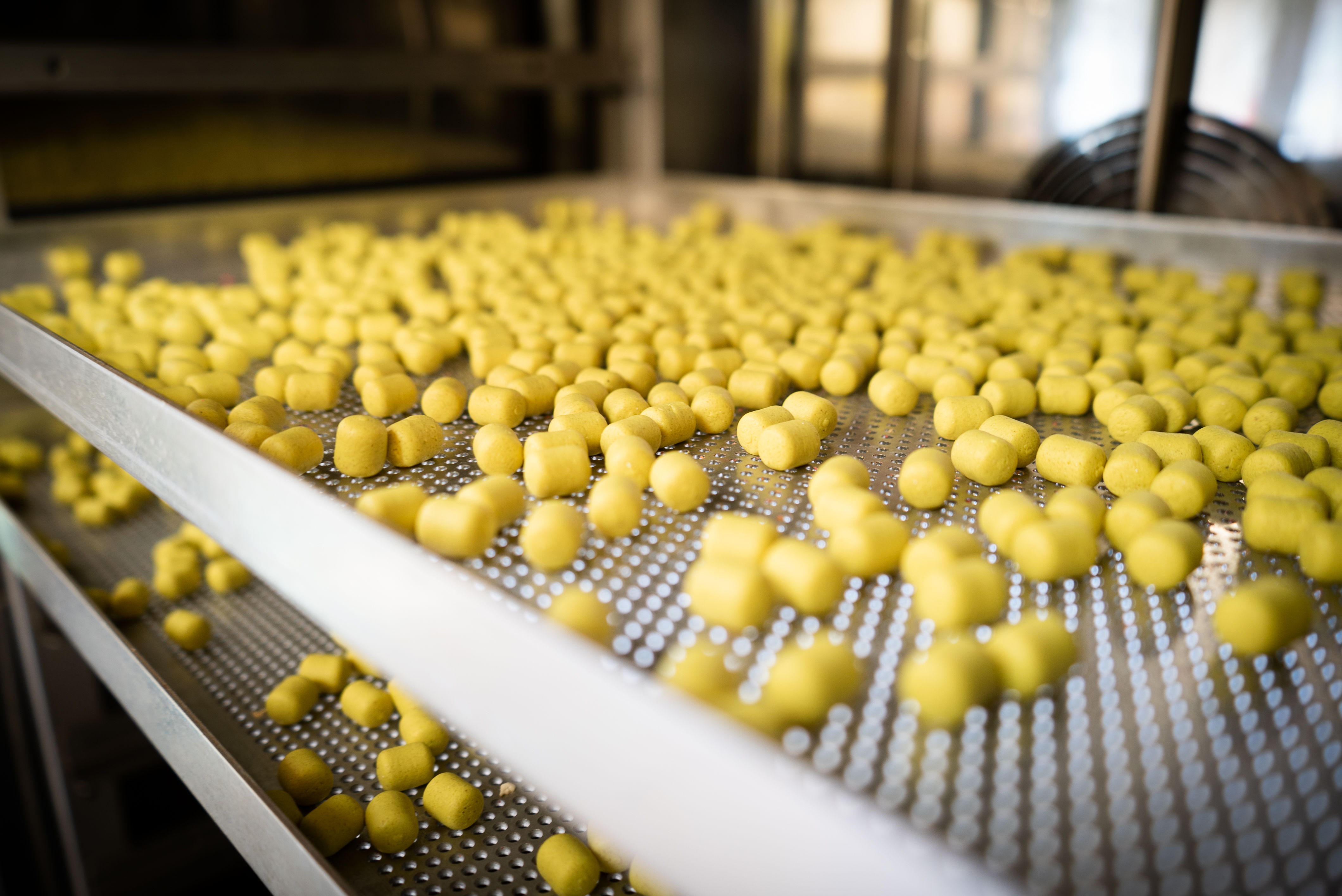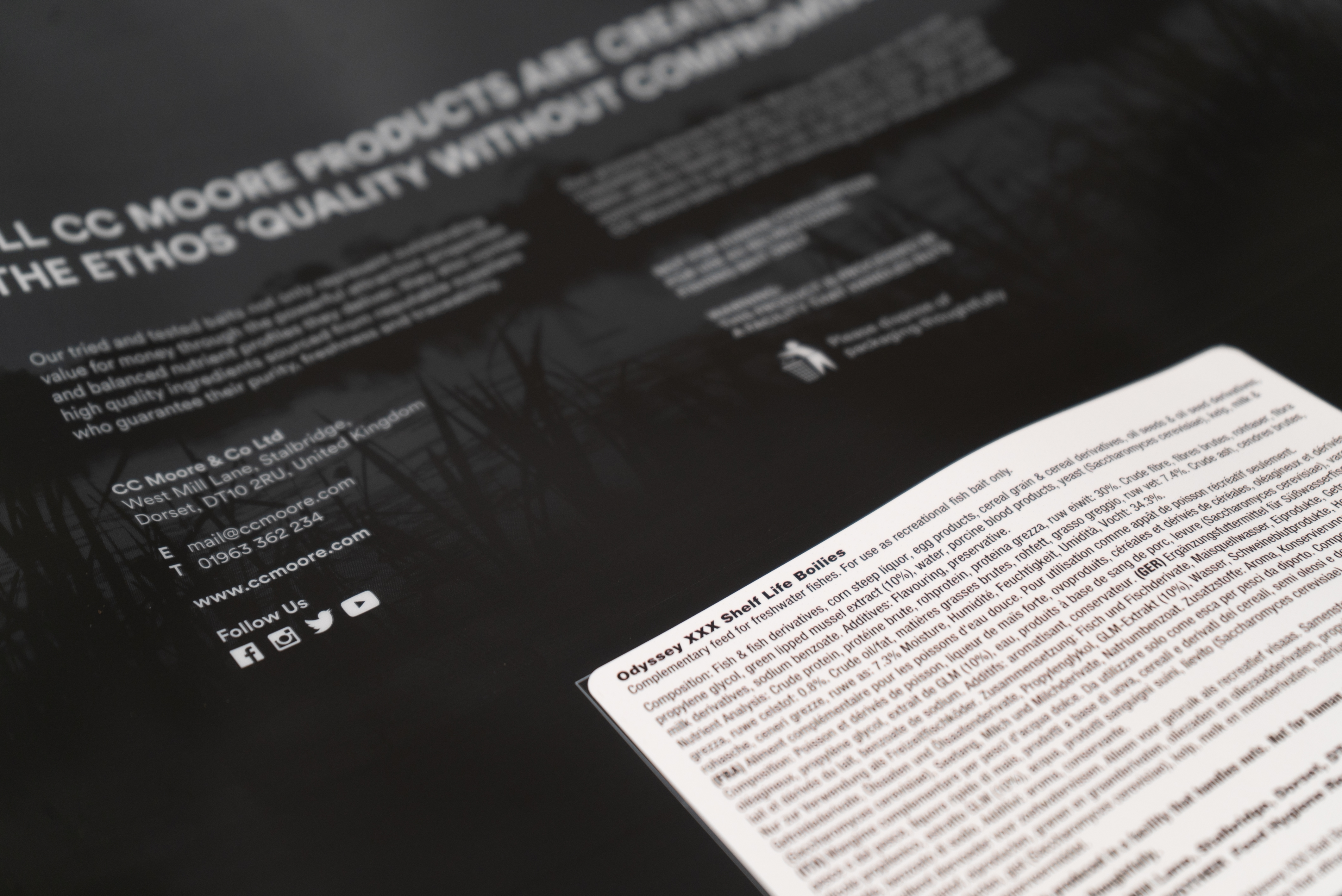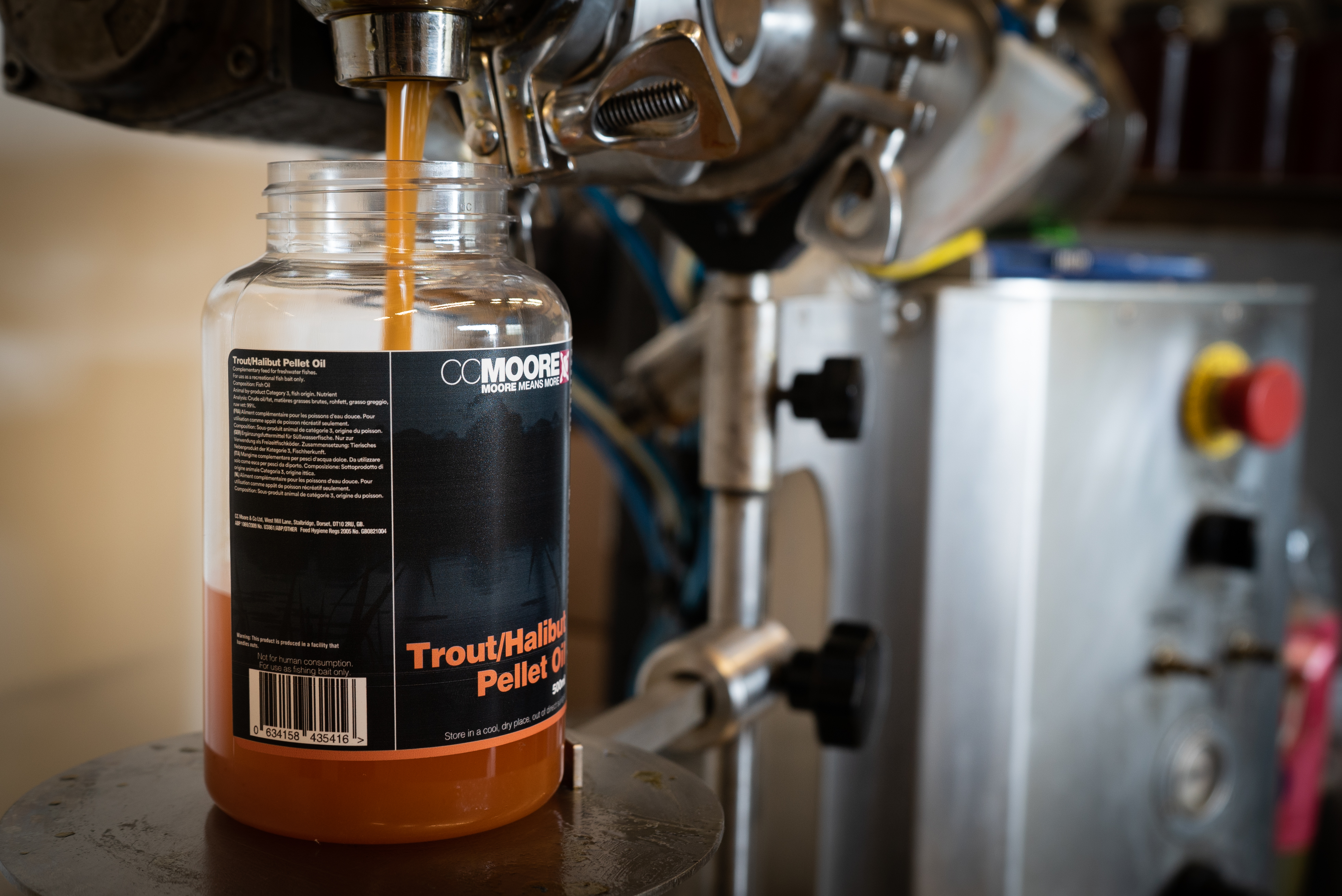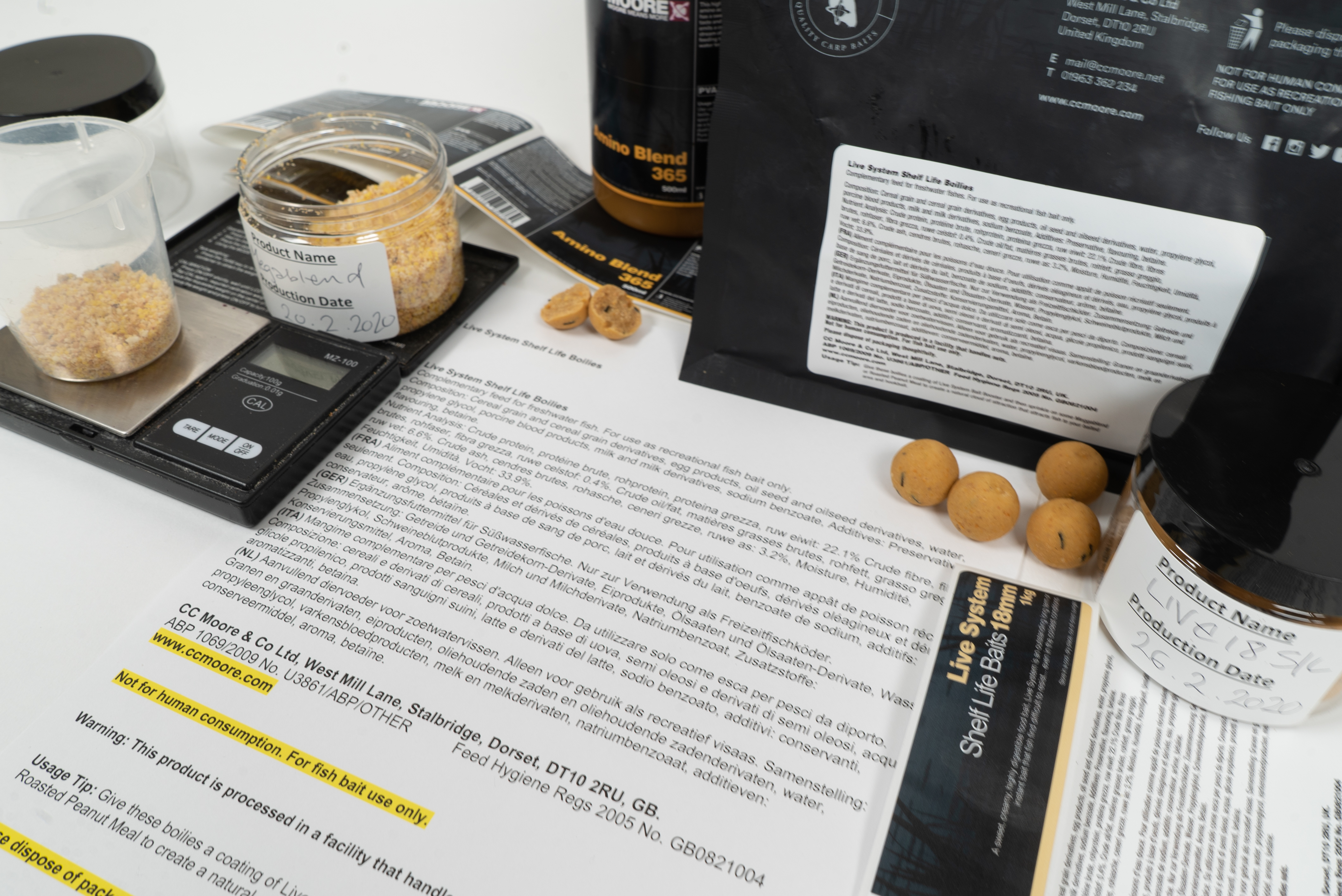New bait legislation: how will it affect you?
We met up with CC Moore to learn more...
A hot topic recently has been the ban on certain dyes and other additives that had been commonly used in bait manufacture.
We met up with CC Moore to learn more on this and the wider regulations relating to bait, and to find out how and why they label their products...
I’ve heard that some commonly used bait ingredients, such as dyes, are being banned. Is this true?
It is true that certain colourants and dyes currently used in the fishing bait industry are NOT actually permitted for use in fishing baits such as boilies, pellets and ground baits and should not therefore be used in such bait products. This includes a number of colourants that are used in human food and also many of the common fluoro dyes that are used in hookbaits and lures.
This is not a new ‘ban’ and stems from long-established regulations. It applies because most fishing baits are now classed as animal feed (for fish) and can therefore only contain fish feed approved ingredients.
These colourants and dyes are not permitted for use in fish ‘feed’, and hence feed baits, and so CC Moore do not use them in any of their feed baits in the UK or the EU. This is why some of our feed bait products appear less ‘colourful’ than others on the market, as we only use natural and fish feed permitted colourants.
Currently, these colourants and dyes can be used in lures and hookbaits because these are not ingested by fish and are not classed as feed.

Doesn’t this ‘ban’ only apply in the EU, and not the UK, especially as the UK has left the EU?
No, this is not the case. These regulations already apply in the UK (as well as in the EU) and will continue to do so even now the UK has left the EU and after the end of the Brexit Transition Period from January 2021.
The Feed Hygiene Regulations, The Animal By-Product (ABP) Regulations and the associated rules controlling animal feed and fishing bait are all part of UK law, including the requirement for bait manufacturers to register under these regulations and to only use permitted ingredients in baits. Any baits made, bought or used in the UK must comply with these UK regulations, which are intended to protect fish, consumers and the environment and to give anglers confidence in the products they are using.

How do CC Moore label their bait products?
As well as the usual information on product name, product weight, volume or quantity and some product branding, there is a lot of important information that CC Moore include on our product labels for the benefit of customers.
If the product is a feed bait the label will show an analysis giving the levels of the key nutrient constituents that are present in the bait such as protein, oil and fibre. In addition, there will also be a list of ingredients that go to make up the product. This information will often be found in several languages if the product is also exported to other countries outside the UK.
Other important details on the label include tips on how to store and use the product, plus contact details for CC Moore and the company’s registration numbers under certain regulations that apply to fishing bait. You will see certain ‘warnings’, such as the fact that the product is not intended for human consumption or, where relevant, that a product may contain certain allergens, such as peanuts. Crucially of course, you will see a best before date and batch number.

Why do CC Moore label their products in this way?
There are two answers to this….!
Firstly, because it is helpful to our customers, and secondly because much of the information provided is a legal requirement in the UK.
The nutrient analysis and the list of ingredients we provide are useful to customers who want to know what they are putting into the water and presenting to fish, and that a product is wholesome, consistent and has a certain nutritional profile. Such information is also a legal requirement for all fishing baits such as boilies, pellets, ground baits and liquid feed bait supplements in the UK. This enables customers and regulatory bodies to check that a product contains what it claims to and that it is made from ingredients that are permitted for use in fish feed (which does not necessarily apply just because something is ‘human food grade’ or suitable for feeding to pets or farm animals!).
Our usage tips, hints and statutory ‘warnings’ are provided so that customers can get the best from the product, to give information on other products that may compliment it and also so that customers know how to best handle or store the product safely and to keep it in its best condition. As long as a product is stored and handled as advised it should remain in good condition for use by the ‘best before’ date, though it’s worth remembering that a best before should be considered a rough guide rather than a strict rule - there is no reason to throw away bait that goes past its best before date if it looks and smells safe to use. As well as being guides to use, best before dates are also legal requirements - as are individual batch numbers.
The unique batch number is vital so that any batch of product can be fully traced back to its date of manufacture and the batches of ingredients that were used in making it. Aside from the legal necessity, this is a key part of CC Moore’s extensive commitment to quality control, a commitment which also involves regular testing for nutritional values and safe microbiological status – such as ensuring the absence of salmonella.
CC Moore’s commitment to quality control gives our customers confidence in our products, the way they are made and what they contain, and enables us to comply with our legal requirements.
How can consumers tell if a bait manufacturer is properly registered?
Evidence of CC Moore’s compliance is shown by the inclusion on product labels of our registration numbers under the relevant regulations.
These numbers provide customers with a quick check on the status of a manufacturer as operating legally and properly, and their inclusion on product labels is compulsory. The Feed Hygiene registration number for a UK-based manufacturer will begin with the prefix ‘GB’.
The Feed Hygiene and ABP regulations are enforced in the UK by Trading Standards and the Animal & Plant Health Agency of DEFRA, both of whom inspect CC Moore on a regular basis.



